ACrOSS THE HOWE OF FIFE
FrOM EDINBUrGH TO DUNDEE
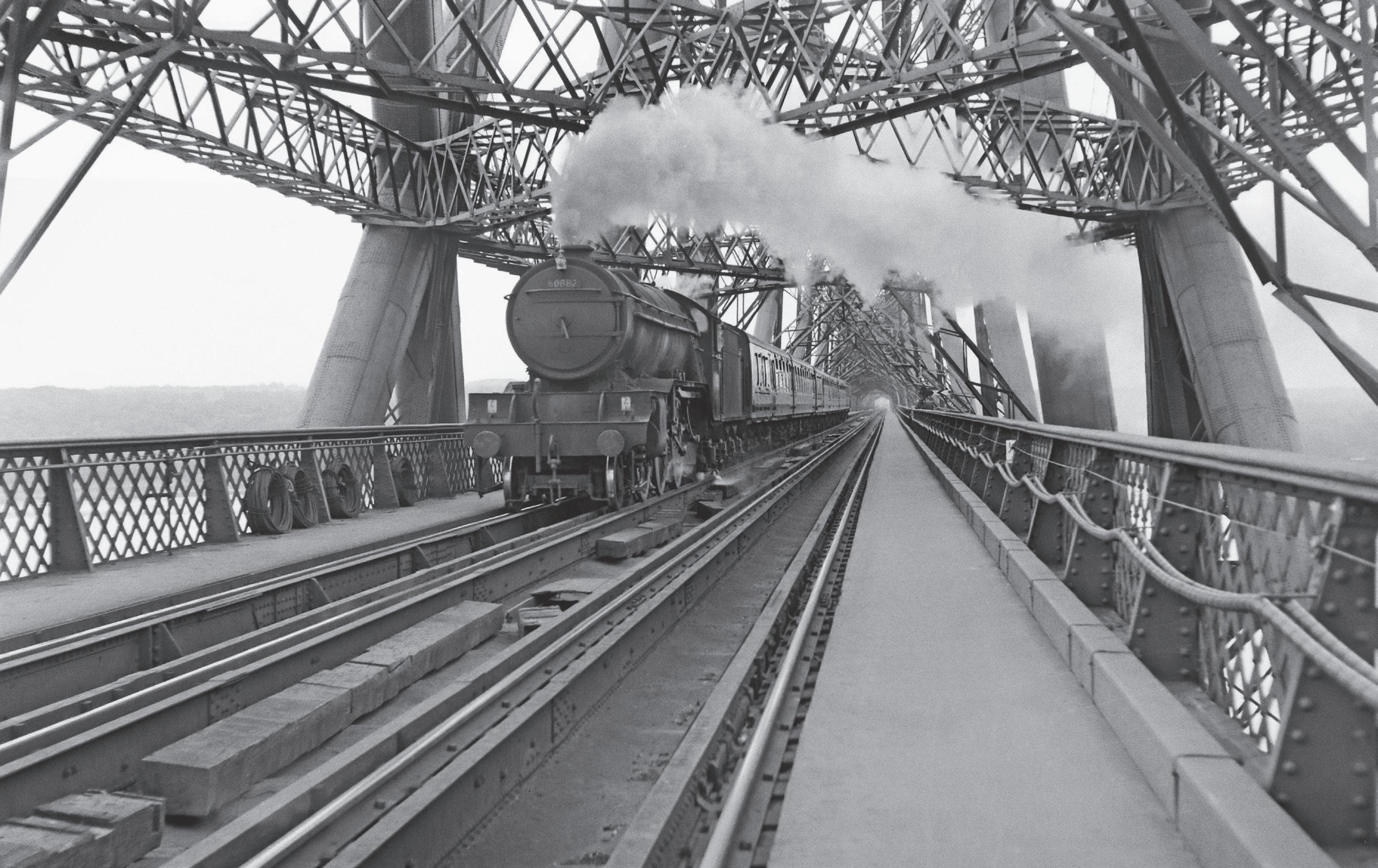
IAN LAMB
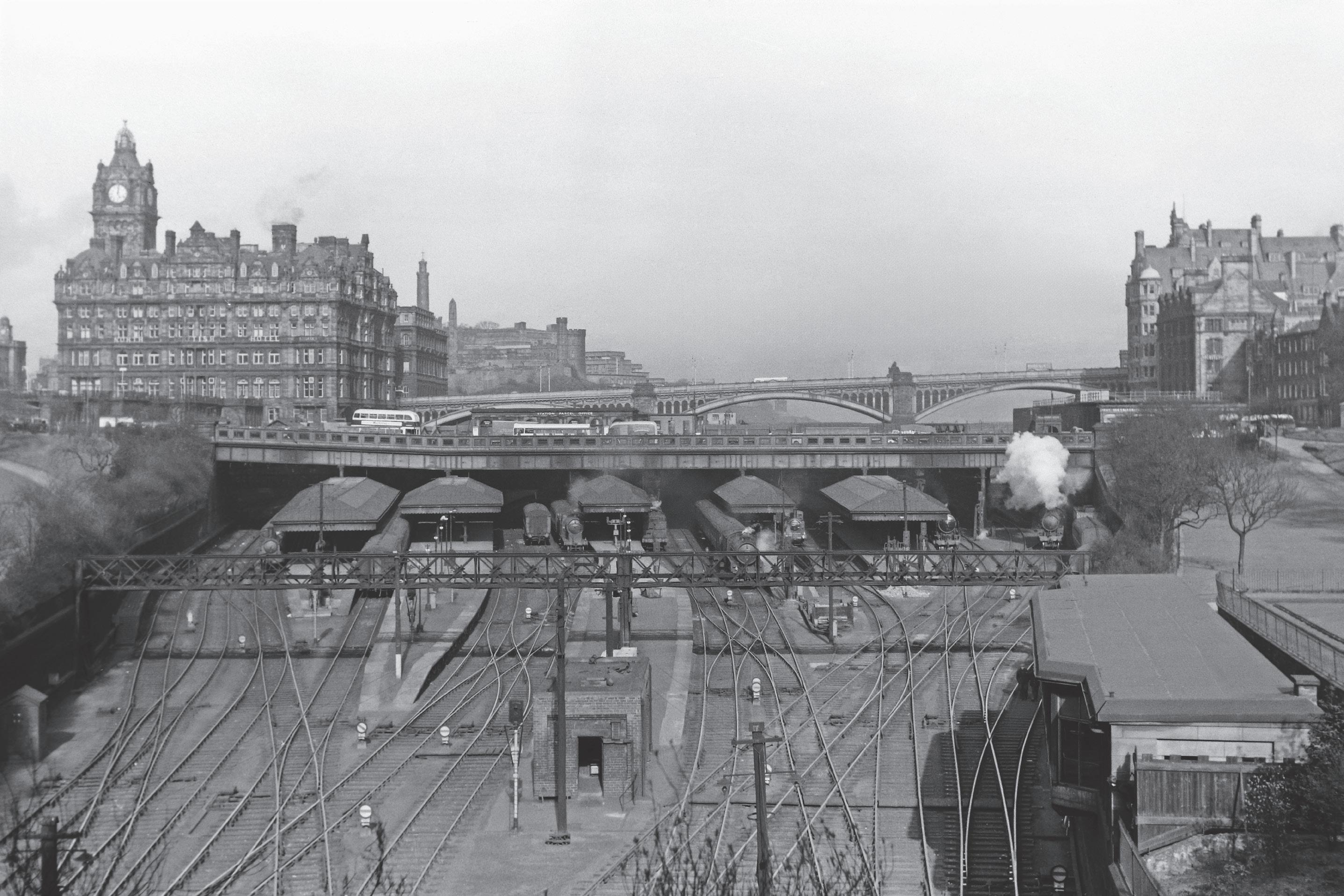
14 April 1954. ‘Auld Reekie’ in all its glory! ‘Arthur’s Seat’ and the eastern suburbs are lost in a haze of mist. The North British Hotel (as it was then) dominates the skyline, whilst the North Bridge is prominent above the nineteen platforms, hosting – as always – a motley collection of Edinburgh Corporation buses. (Arthur Mace)
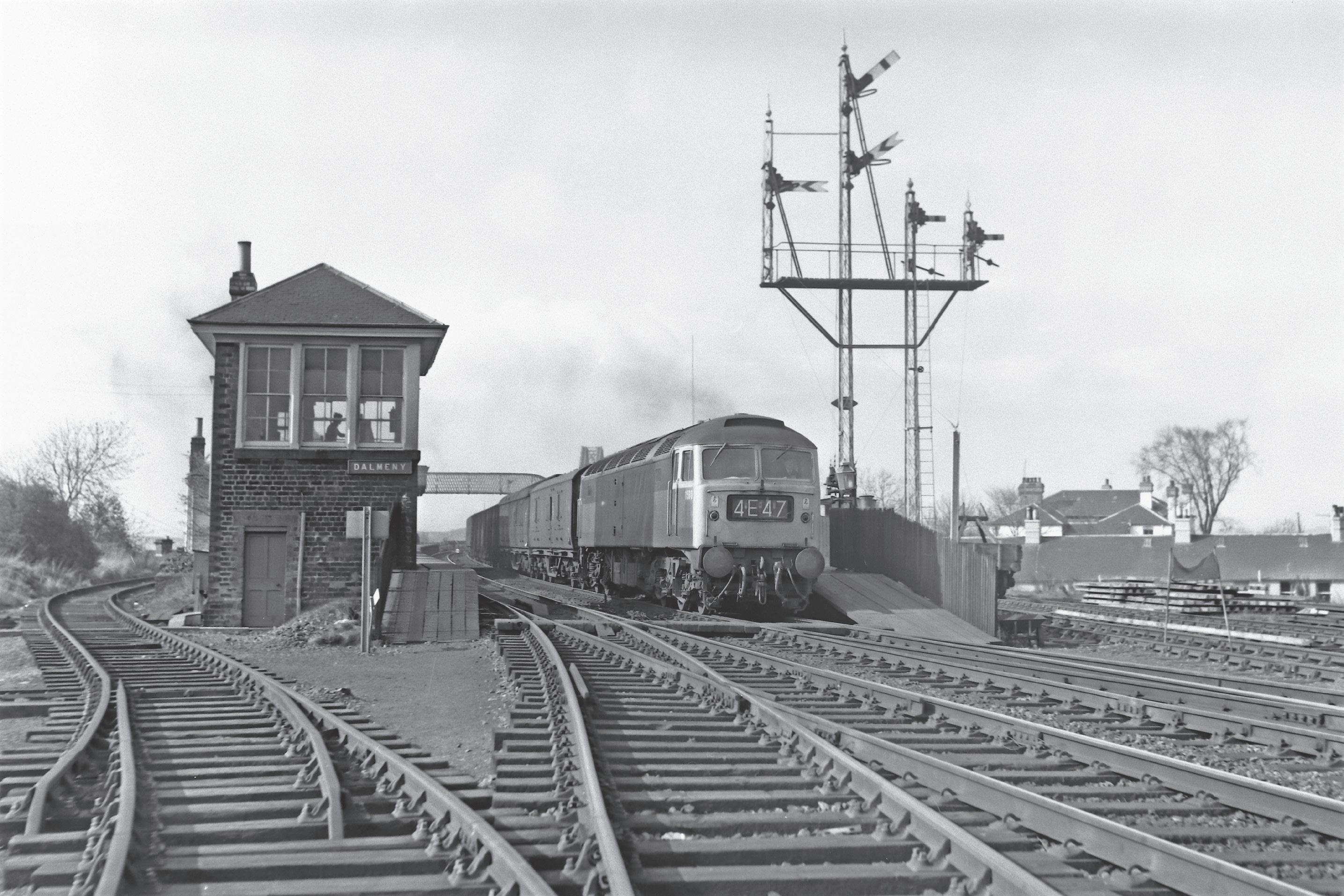
1960s. The stalwart in motive power for many years were the ubiquitous Brush/Sulzer Type 4 locomotives, represented here by Class 47 No. 1560 as it builds up speed coming off the Forth Bridge through Dalmeny for the ‘Turnhouse race track’ towards Saughton Junction with an express service for Edinburgh. (W. A. C. Smith)
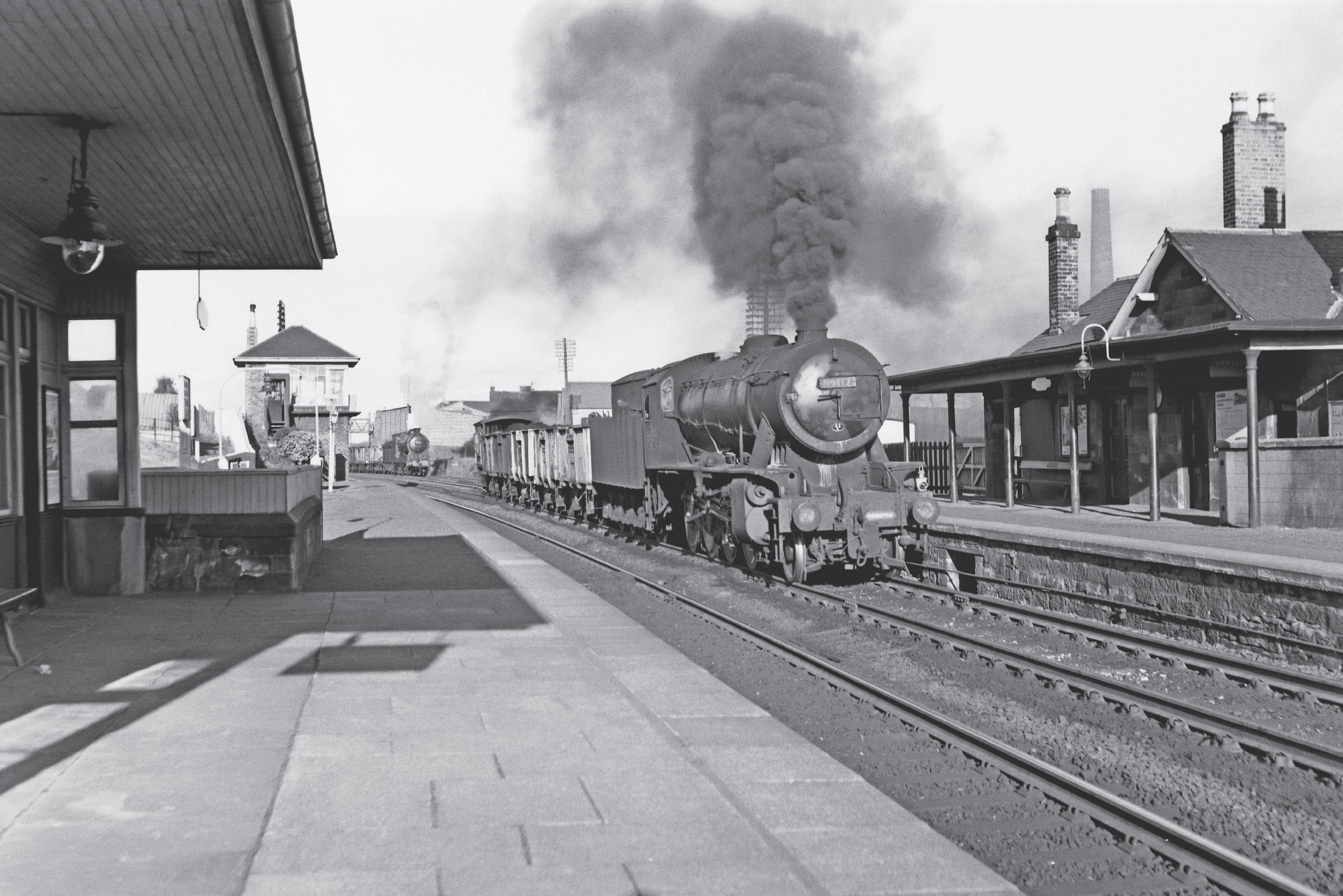
October 1966. Ex-WD 8F 2-8-0 No. 90117 is laying a smokescreen over Dysart as it departs from the goods yard with a load of coal wagons from the nearby ‘Dubbie Pit’ Frances colliery. This engine was constructed by the North British Locomotive Company during 1943 as one of the earliest examples of the class to enter service, initially being loaned to the LNER before shipping to France in 1945. Returning to Britain in 1947 she was acquired by the British railways of the day, and numbered 90117, then allocated to Dunfermline (62C) shed before being withdrawn from service during 1967. J37 0-6-0 No. 64570, in the background, waits to follow with its train. (W. A. C. Smith)
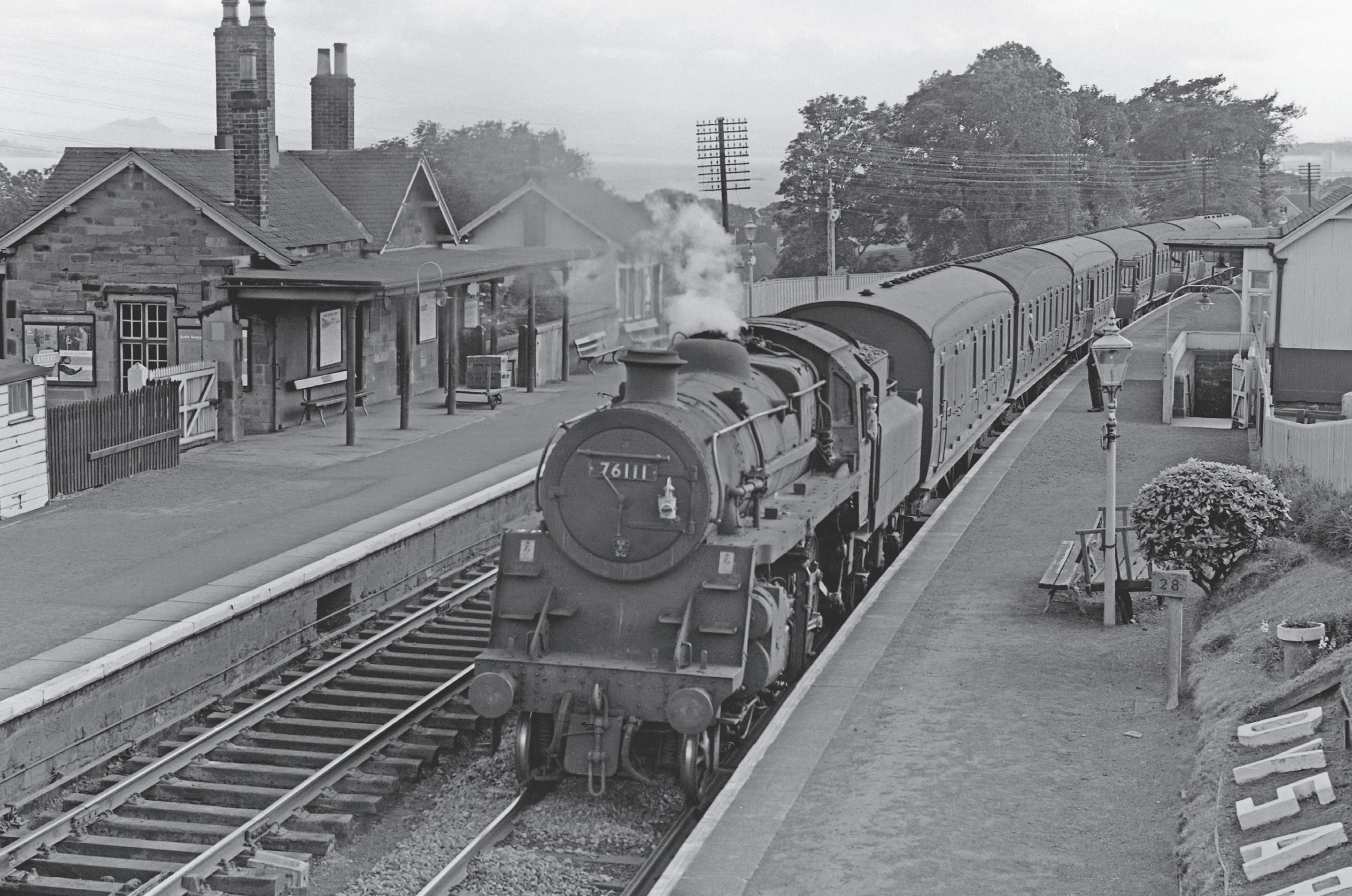
Not far from home, Thornton (62A) Standard 4 2-6-0 No. 76111 with a local northbound ‘on the base’ (alias the Rosyth Dock Yard service) halts at Dysart station, where the name is literally cast in stone. Inchkeith island is outlined in the ‘haar’ behind the ‘Up’ station building. (Neville Stead Collection)
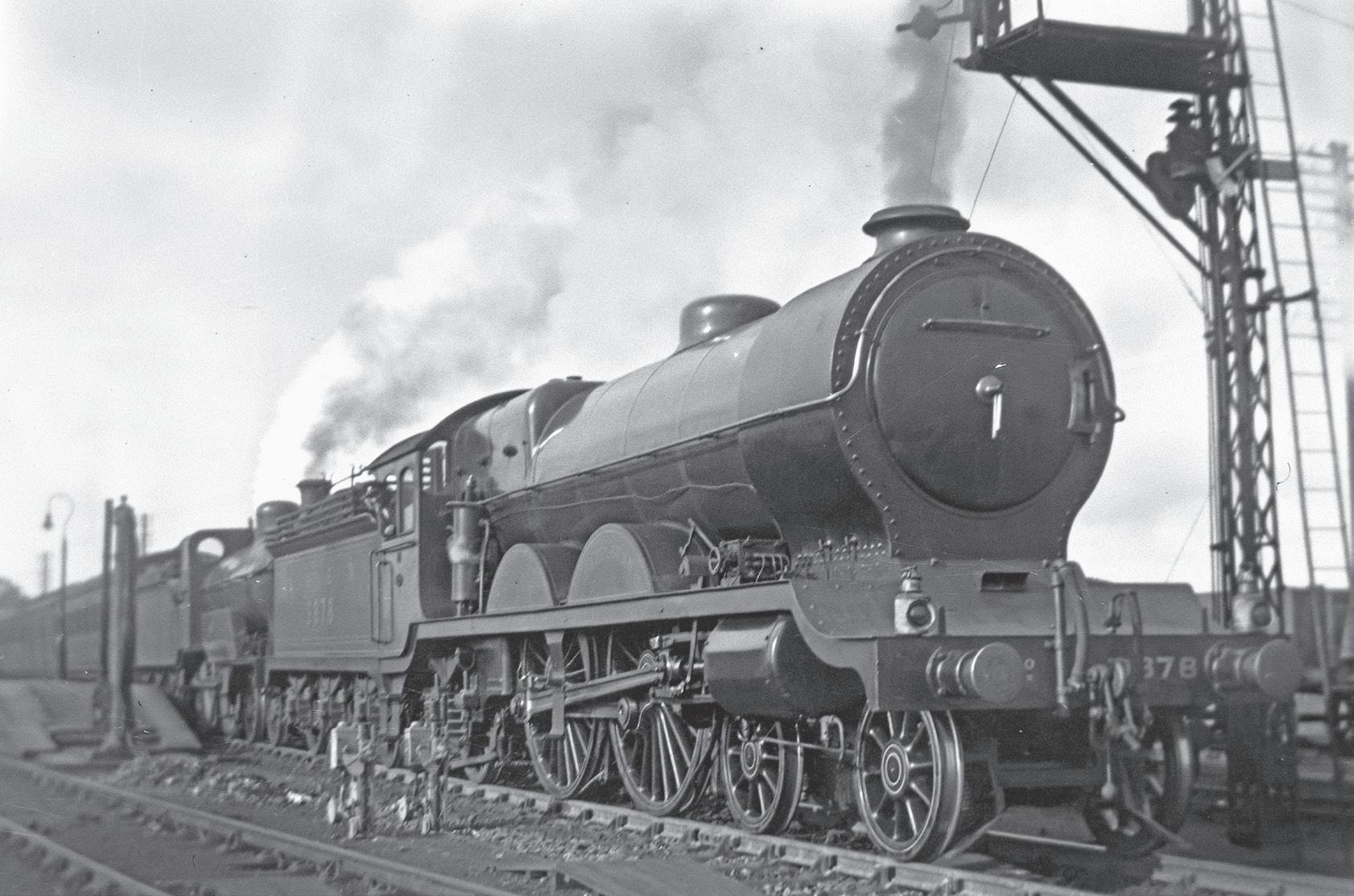
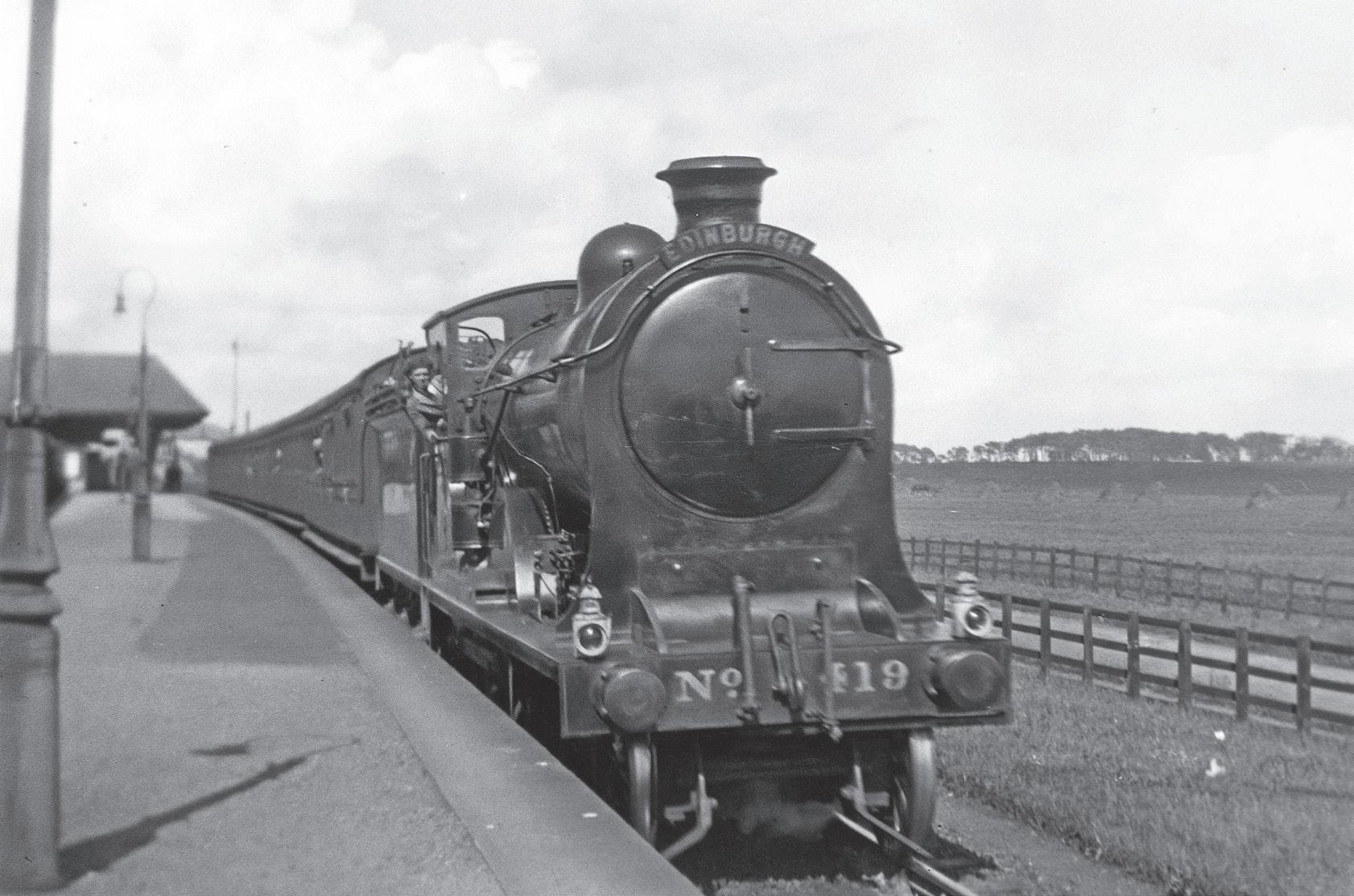
24 August 1925. Leuchars railway station is as important today as it was when the first train passed through over 150 years ago. By virtue of the photographer’s camera at the time, we can understand and appreciate what rail services were like in those days, especially when today standing on the platform awaiting the latest ‘AZUMA’ Aberdeen-London express. The only common denominator now, and then, are the initials LNER! Reid’s magnificent NBR ‘Atlantic’ No. 9878 “Hazeldean” pilots ex-GNR Class D1 4-4-0 No. 3065. (Milepost)
1925. A determined fireman of an Edinburgh bound train resting at Leuchars station ensures that he is well and truly in the picture as his LNER 4-4-0 engine No. 419 Meg Dods prepares for the road ahead. The wide open fields to the right would eventually become part of the site of RAF Leuchars air base. (Milepost)
1925. A masterpiece of railway history. As part of a through train service, an East Coast Joint Stock sixwheel coach, No. 127, rests at Leuchars station before continuing on its journey. One can’t but help admire the skill of the coachbuilder’s craft who created such an attractive vehicle. (Milepost)
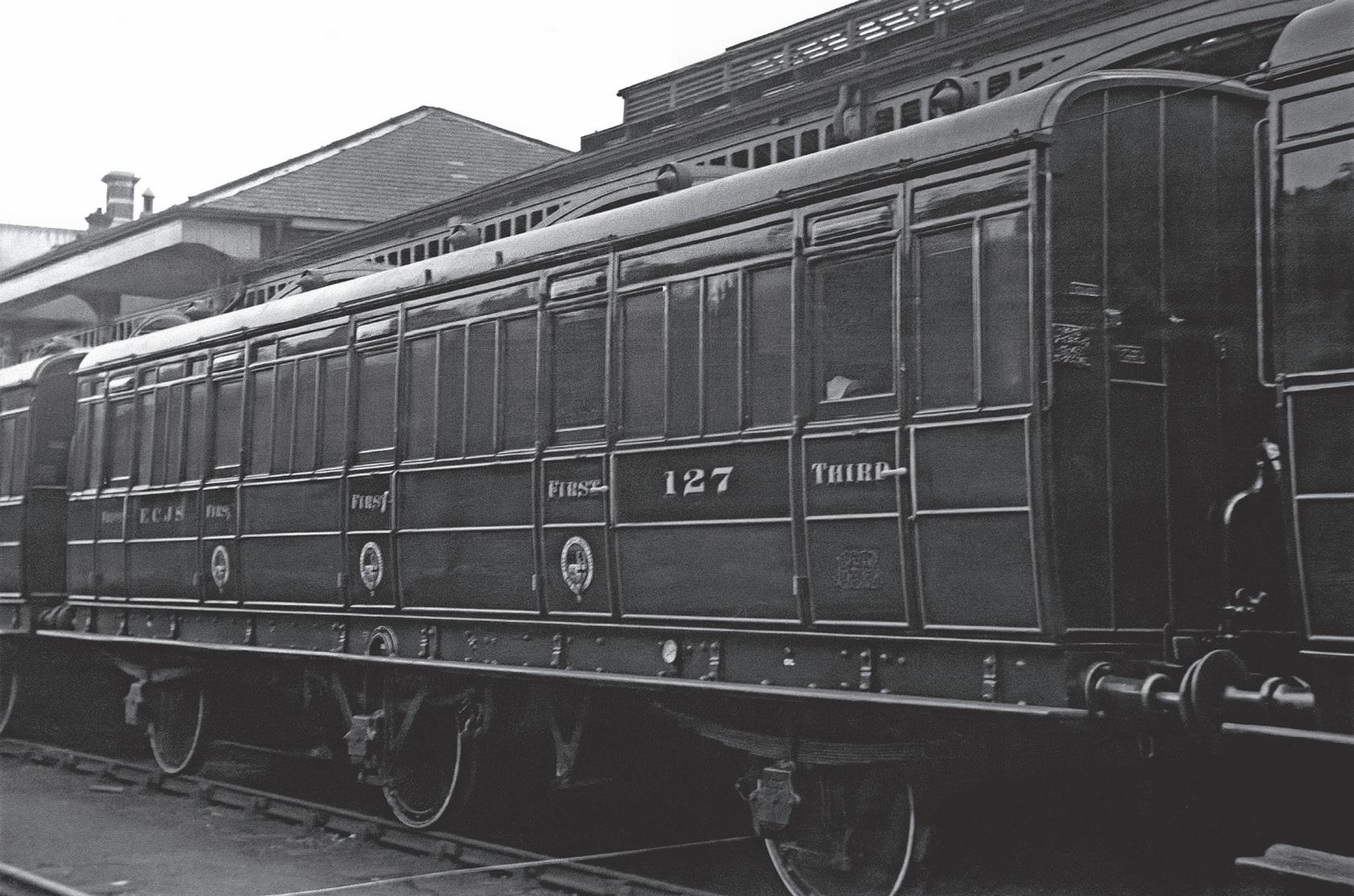
1925. An ex-NBR 0-6-0 in early LNER days heads through Leuchars station with a southbound freight train. (Milepost)
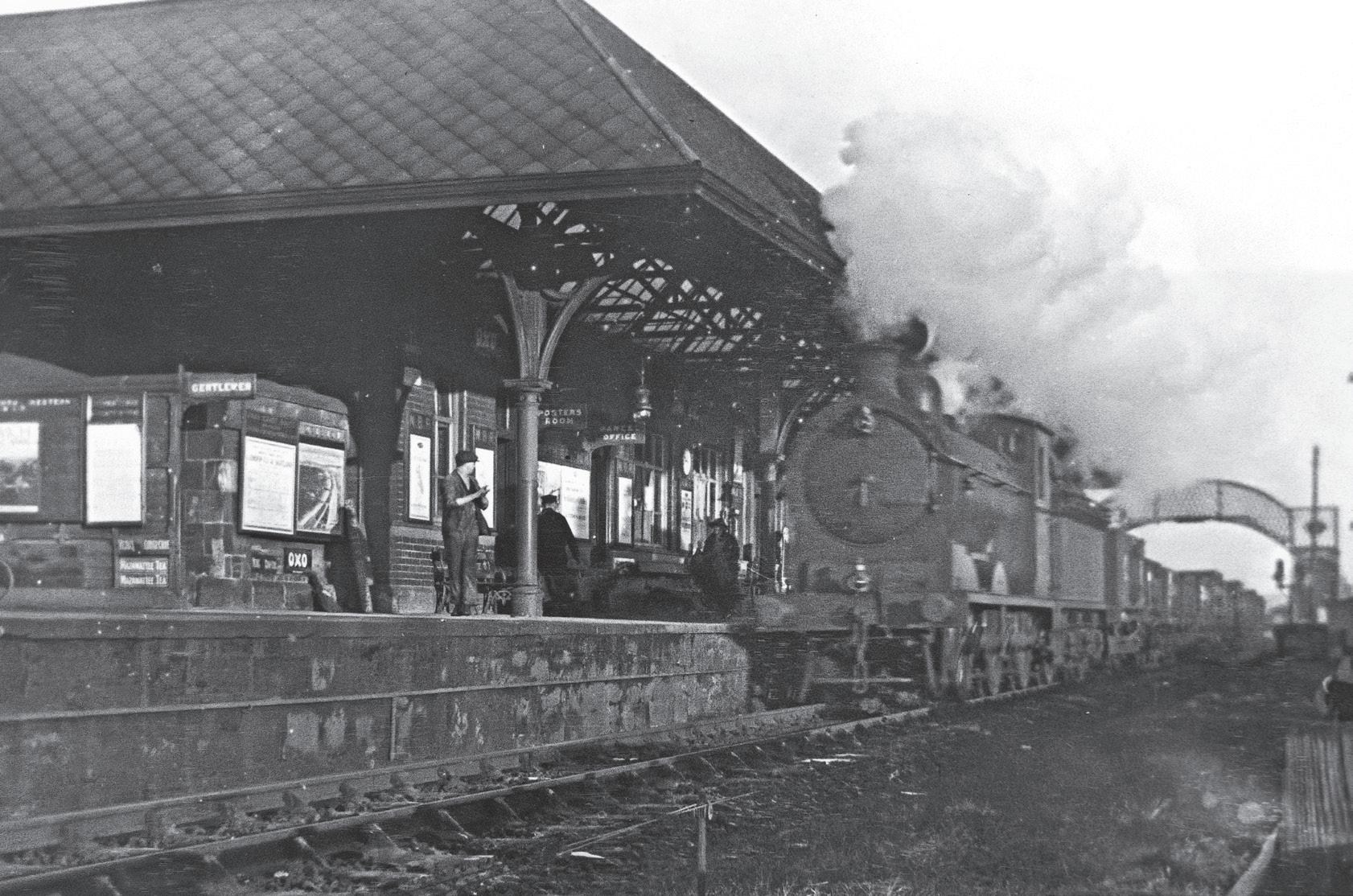
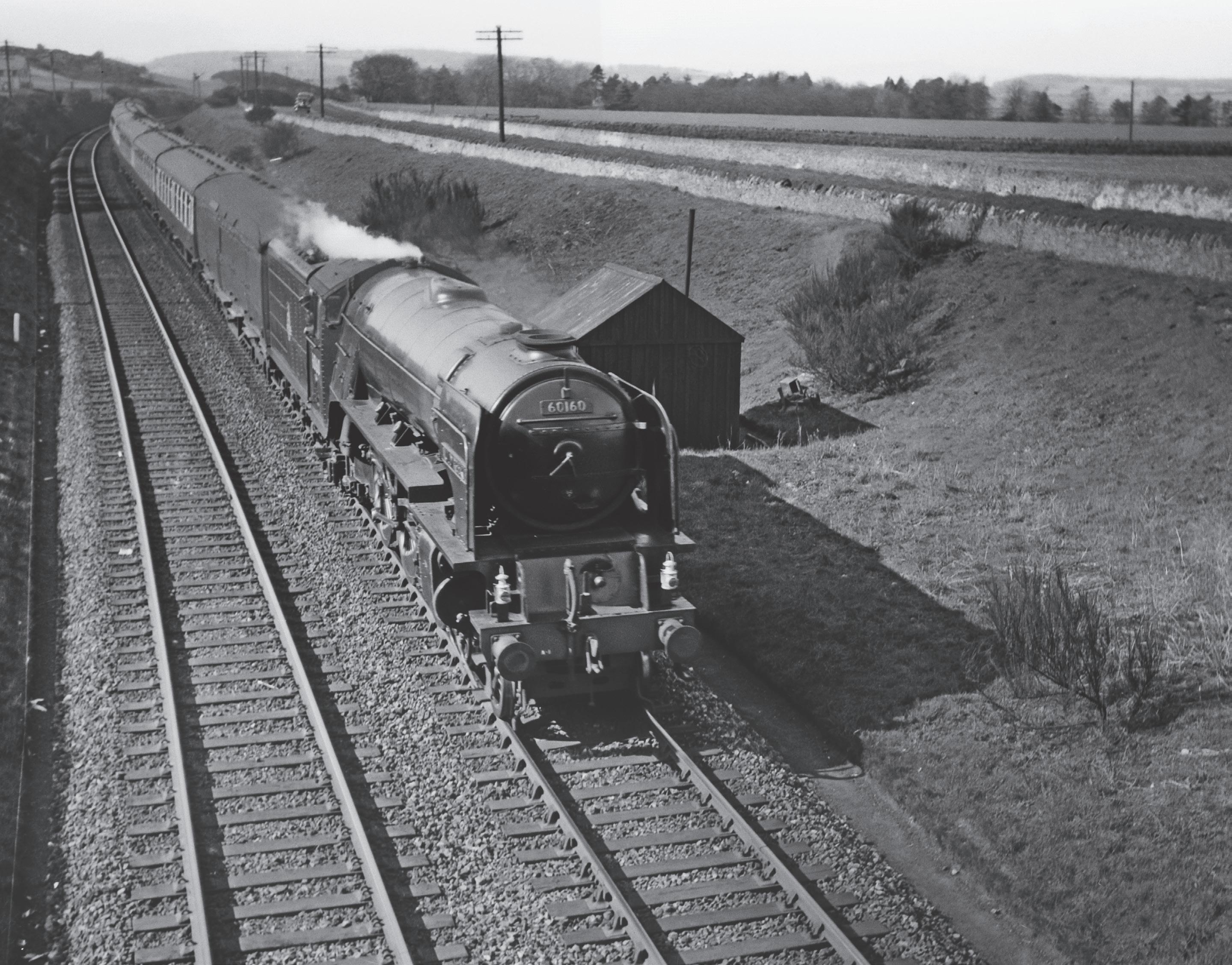
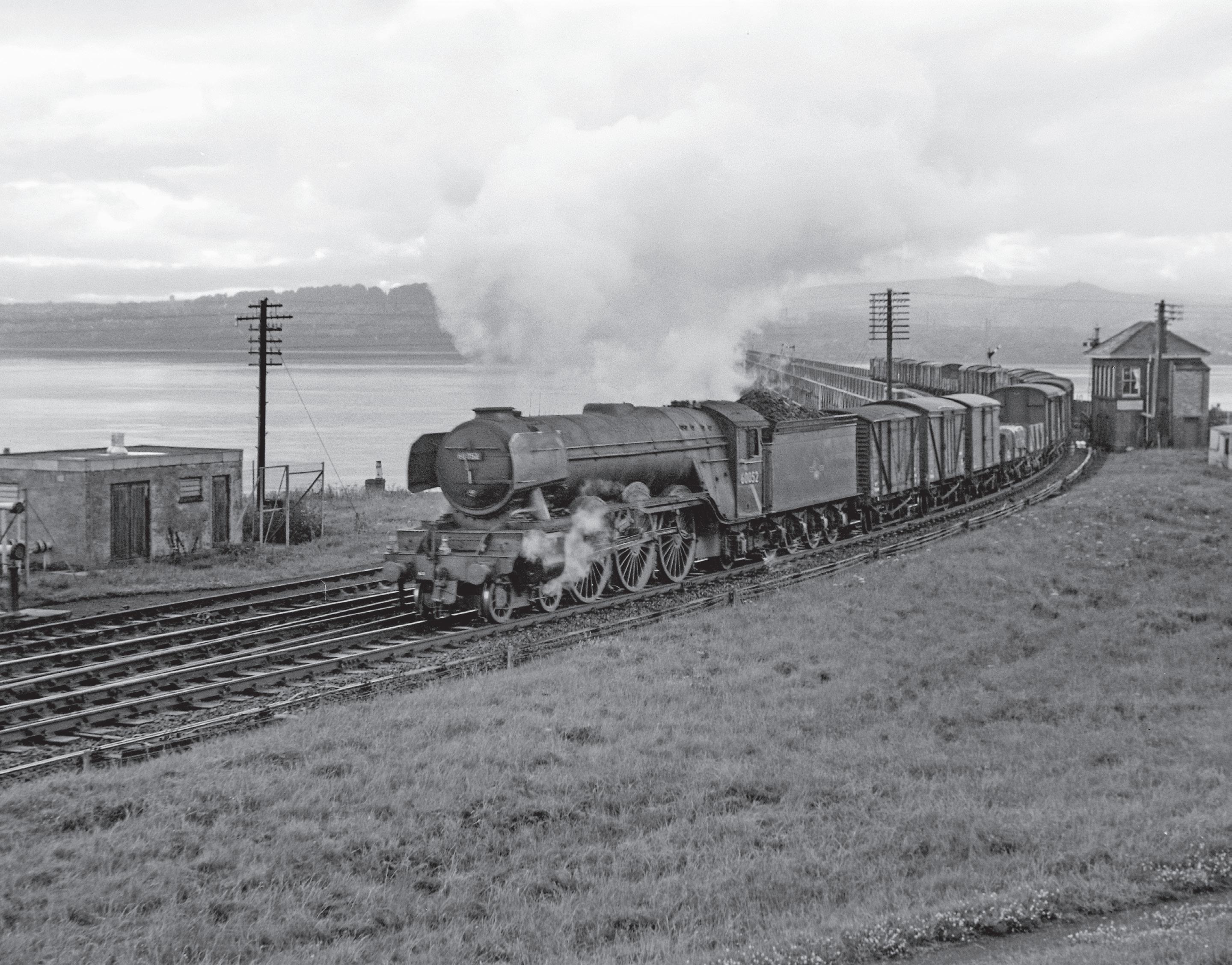
Left: 16 April 1955. Back to more ‘modern’ times. Haymarket (64B) Peppercorn A1 Pacific No. 60160 Auld Reekie descends from Leuchars towards Wormit and the Tay Bridge with an Edinburgh (Waverley) to Aberdeen express. (George Bett)
Below: Surely one of the finest views from a railway anywhere in Britain; the approach to Dundee across the Tay estuary to the distant Sidlaw hills. A3 Pacific No. 60052 Prince Palatine builds up speed through Wormit with a southbound heavy freight. (Sandy Murdoch)
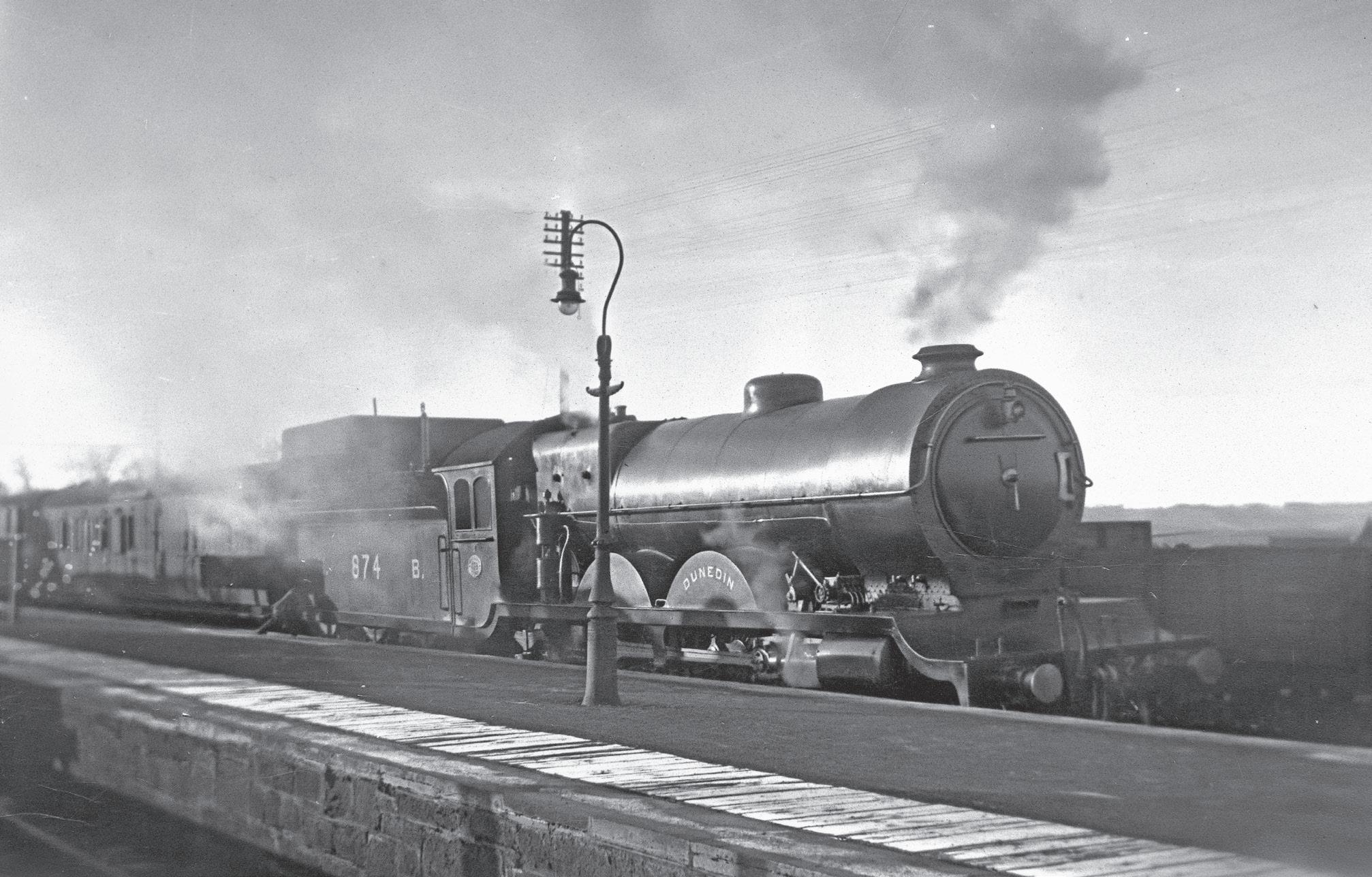
In this album, photos from the substantial Transport Treasury archive illustrate the character of many of the lines which served (and most still do) between Edinburgh and Dundee. As well as covering the key route between the two cities, we have sought to provide some unusual images from locations which have often been bypassed in the (literal and metaphorical) rush along this former North British Railway route.
Although some of the Fife rail network survived the ‘Beeching Axe” – and is likely to be increased with the re-opening of the line from Thornton to Leven – much has changed in the railway scene, and this album allows us to indulge in nostalgia for past times on routes both lost and retained.
ISBN 978-1-913893-66-8
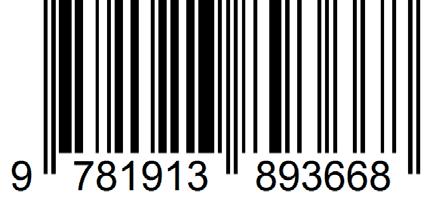
£13.50

